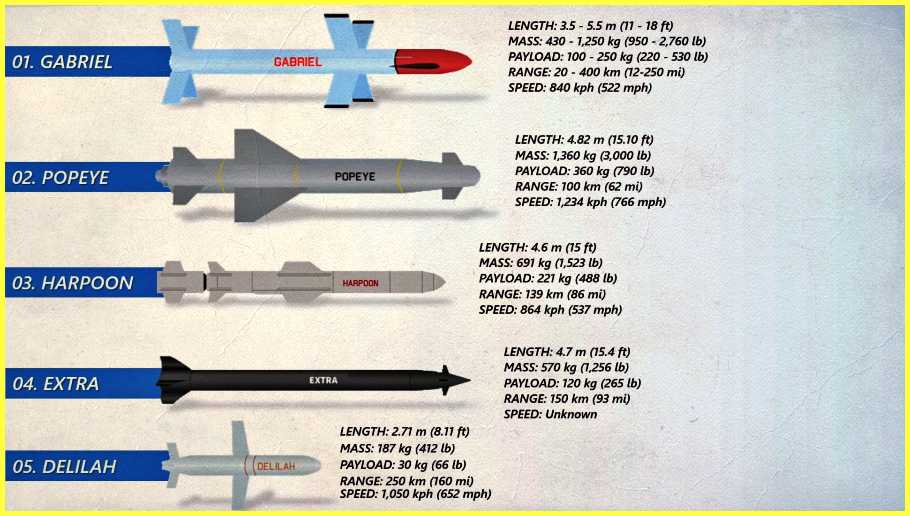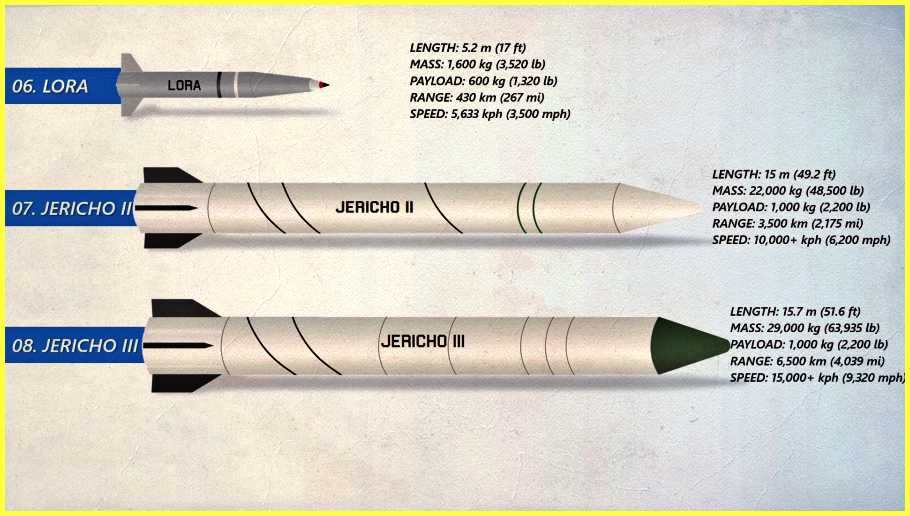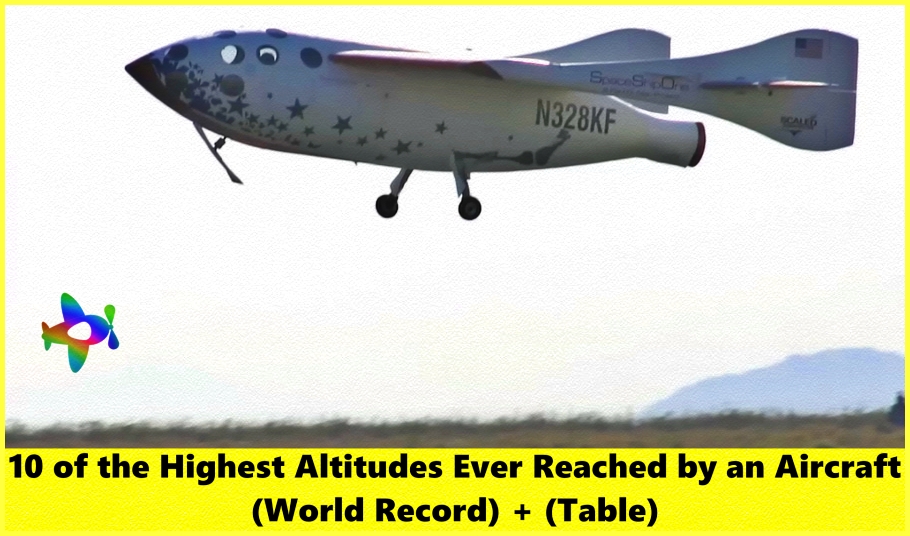Top 10 Dangerous Missiles Of Israel
Today we will Share the Updated list of Top 10 Dangerous Missiles Of Israel and you can Download this Page as a PDF in 1 click, just go to the end of this Page, So let’s Start.
- In the heart of the Middle East, a region marred by conflicts and geopolitical tensions, Israel has emerged as a technological powerhouse, especially in the field of missile development. Over the years, Israel has invested heavily in creating a formidable arsenal of missiles, making significant advancements in both range and precision. These missiles serve as a critical component of Israel’s defense strategy, deterring potential threats and ensuring the safety and security of its citizens. In this article, we will explore the various types of missiles developed by Israel (Top 10 Dangerous Missiles Of Israel), highlighting their capabilities and significance in the country’s defense landscape.
List of Top 10 Dangerous Missiles Of Israel
Israel, a nation nestled in the heart of the Middle East, has long been a hub of technological innovation and military prowess. Over the past six decades, the country has garnered significant attention for its advanced missile capabilities, aided by foreign support and collaboration. Through rigorous research and development, Israel has not only developed a formidable array of missiles but has also exported cutting-edge missile systems to various countries. While the nation remains tight-lipped about its nuclear program, it is widely speculated that Israel possesses a significant nuclear arsenal, adding a layer of complexity to the region’s geopolitical landscape.
#10. Gabriel Missile: Pioneering Anti-Ship Warfare
One of Israel’s earliest successes was the development of the Gabriel missile family. These anti-ship missiles, operational since 1972, have been deployed by the Israeli Air Force and Navy. The Gabriel missile’s combat debut during the 1973 Yom Kippur War showcased its effectiveness, sinking enemy naval vessels. With variants capable of sea, land, and air deployment, the Gabriel missile remains a potent force in modern naval warfare.
Here is a table summarizing the information about the Gabriel missile family:
| Property | Description |
|---|---|
| Origin | Israel |
| Class | Short-range antiship cruise missile |
| Possessed By | Argentina, Chile, Ecuador, Finland, Iran, Kenya, Mexico, Israel, Singapore, South Africa (Skorpioen), Taiwan (Hsiung Feng 1), Thailand |
| Basing | Ship-, ground-, air-launched |
| Length | 3.42 – 4.7 m |
| Diameter | 0.34 – 0.44 m |
| Launch Weight | 522 – 960 kg |
| Payload | Single warhead |
| Warhead | High explosive, semi-armor piercing |
| Propulsion | Solid propellant (solid propellant, turbojet for Gabriel Mk 4LR) |
| Range | 35 – 400 km |
| Status | Operational, Production complete (Mk 2 and Mk 3) |
| In Service | Since 1972 |
Now, let’s add information about each specific variant of the Gabriel missile:
| Variant | Description |
|---|---|
| Gabriel Mk 1 | Developed in the 1960s in Israel, first deployed in 1972, and used in the 1973 Yom Kippur War. |
| Gabriel Mk 2 | Longer-range variant introduced in 1976 with a range of 35 km, equipped with a single 180 kg warhead. |
| Gabriel Mk 3 | Improved guidance system in 1979, range of 35 km, single 150 kg warhead, and guided by an inertial navigation system. |
| Gabriel Mk 4 | Long-range variant with a range of 200 km, introduced in 1992, carrying a single 240 kg warhead. |
| Gabriel Mk 5 | Latest known variant, possibly entered service in 2007, with an estimated range of 200-400 km. |
The Gabriel missile family includes multiple variants with different capabilities and improvements over the years.
#9. Popey Missile: Precision Strikes from Above
Israel’s Popey missile, introduced in the 1980s, is an air-to-surface missile renowned for its precision strikes. With a range of 75 to 100 km and the ability to carry a 350 kg payload, Popey has been a stalwart in Israel’s long-range missile arsenal. Its Turbo variant, believed to be nuclear-capable, adds a strategic dimension to Israel’s defense capabilities, making it a formidable deterrent.
Here is a table summarizing the information about the Popeye missile and its variants:
| Property | Description |
|---|---|
| Origin | Israel |
| Possessed By | Australia, India, Israel, South Korea, Turkey, United States |
| Variants | Popeye 1, Popeye 2, AGM-142A-F, Crystal Maze, Popeye Turbo |
| Alternate Names | Have Nap, Have Lite, Raptor |
| Class | Air-to-surface missile, Cruise missile (Popeye Turbo) |
| Basing | Air-launched, Sub-launched (Popeye Turbo) |
| Length | 4.82 m (Popeye 1/AGM-142), 4.25 m (Popeye 2), >4.82 m (Popeye Turbo) |
| Diameter | 0.53 m |
| Launch Weight | 1360 kg (Popeye 1/AGM-142), 1135 kg (Popeye 2), 1100 kg (Crystal Maze), Unknown (Popeye Turbo) |
| Payload | 350 kg, Unknown (Popeye Turbo) |
| Warhead | Unitary high explosive, high explosive penetrator, nuclear (Popeye Turbo) |
| Propulsion | Single-stage solid propellant, turbofan (Popeye Turbo) |
| Range | 80 km (Popeye 1/AGM-142A-D), 75 km (Popeye 2), 90 km (AGM-142E/F), 100 km (Crystal Maze), >200 km (Popeye Turbo) |
| Status | Operational |
| In Service | Since 1986 |
Popeye Development and Variants:
- Popeye 1: Solid-fueled air-to-ground missile with a range of 80 km, using an inertial navigation system (INS) and TV/IIR sensor for terminal guidance. Operational since 1986.
- AGM-142 Have Nap: U.S. variants with different seekers and warheads, including imaging infrared (IIR) seekers and penetrator warheads.
- Popeye 2 Have Lite: Lightweight variant with GPS-augmented inertial navigation, operational range of 75 km, certified for F-16 carriage.
- Crystal Maze/Raptor: Lighter variant with an 80 kg warhead, range of 100 km, used by India.
- Popeye Turbo: Turbofan-powered variant with a range between 200 and 350 km, speculated sub-launched variant with a nuclear warhead and estimated range of 1,500 km.
Service History:
- Israel: Fielded Popeye 1 in 1986, Popeye 2 in 1995, extensive combat use.
- United States: Procured and co-produced AGM-142 variants, used in limited combat operations.
- Other States: Exported to Australia, India, South Korea, Turkey; unconfirmed reports of export to China.
#8. Harpoon Missile: A Versatile Anti-Ship Weapon
The Harpoon missile, a US-designed anti-ship cruise missile, has been a mainstay in Israel’s arsenal since 1977. Its subsonic speed and active radar homing make it a challenging target for enemy defenses. Israel has continuously upgraded the Harpoon, exporting various versions to 32 countries. Its combat debut in the 1980 Iran-Iraq war showcased its effectiveness, underlining its status as a reliable anti-ship weapon.
Here is a table summarizing the information about the Harpoon missile and its variants:
| Property | Description |
|---|---|
| Origin | United States |
| Class | Subsonic Cruise Missile |
| Basing | Fixed-wing aircraft, surface ships, submarine |
| Length | 3.8 m (air-launched) 4.6 m (ship- & sub-launched) |
| Diameter | 0.343 m |
| Guidance | Inertial, semi-active radar |
| Payload | 224 kg |
| Warhead | HE fragmentation |
| Propulsion | Turbojet, solid propellant |
| Range | 90 – 240 km |
| Speed | 0.85 Mach (High subsonic), 291.55 m/s |
| Status | Operational |
| In Service | Since 1977 |
| Homing/Seeker | Active radar |
| Launch Weight | 515.25 kg (air-launched) 690.8 kg (surface- & sub-launched) |
| Operators | United States, Australia, Bahrain, Belgium, Brazil, Canada, Chile, Denmark, Egypt, Germany, Greece, Indonesia, Iran, Israel, India, Japan, Malaysia, Mexico, Netherlands, Pakistan, Poland, Portugal, South Korea, Saudi Arabia, Singapore, Spain, Taiwan, Thailand, Turkey, UAE, United Kingdom, Venezuela |
Harpoon Variants:
- Block IA (RGM/UGM/AGM-84A): Air-launched variant with a range of 120 km, using inertial navigation and active radar guidance, equipped with a 224 kg HE warhead.
- Block IB (RGM/UGM-84C): Introduced sea-skimming approach in terminal phase, improved electronic counter countermeasures (ECCM) for increased targeting precision.
- Block IC (RGM/UGM-84D): Perform both low apogee pop-up trajectory and sea-skimming approach, higher altitude in the first part of the flight path, range increased to 124 km.
- Block ID (RGM84-F): Improved range of 240 km, earlier descent to sea-skimming altitude, added re-attack capability, terminated in 2003 due to launcher limitations.
- Block IE (AGM-84E/SLAM): Air-launched land attack missile with GPS receiver, infrared guidance system, and data-link, precise targeting of land-based assets.
- Block IG (RGM/UGM-84G): Developed for vessels with lightweight launchers, improved software, up to eight waypoints during flight, automatic shoreline avoidance technology.
- Block IH (AGM-84K/SLAM-ER): Extended response version with improved IIR seeker, titanium warhead, added wings, range increased to 280 km, two-way datalink communication for man-in-the-loop control.
- Block II (RGM/UGM-84J/L): Combined guidance technology for littoral waters, over-the-horizon targeting via helicopter, 224 kg warhead, circular error probable of 10-13 m.
- Block II + ER: Enhanced range variant with lighter, lethal warhead, improved turbojet engine, doubling the range to 248 km, deployment planned for F/A-18 and P-8 Increment III patrol aircraft.
Operational History:
- Combat Use: Harpoon missiles used in combat, including operations against Iraqi and Libyan forces.
- Accidental Launches: Two accidental launches, one by USS Coontz in 1981 and another by Danish frigate HDMS Peder Skram in 1982.

#7. Extra Missile: Supersonic Precision Artillery
Introduced in 2013, the Extra (Extended Range Artillery) missile system is a testament to Israel’s advancements in artillery technology. Capable of covering vast distances, this supersonic rocket system boasts a 150 km range, high accuracy, and a unitary warhead. Its multifaceted deployment options, including land-based launches, enhance Israel’s flexibility in the field.
| Extra Missile | |
|---|---|
| Introduction | Supersonic Precision Artillery |
| Year Introduced | 2013 |
| Origin | Israel |
| Class | Supersonic Rocket |
| Range | 150 km |
| Warhead | Unitary |
| Deployment Options | Land-based launches |
| Accuracy | High |
- The Extra Missile is a cutting-edge supersonic rocket system introduced by Israel in 2013. Designed as an Extended Range Artillery (Extra) system, this advanced technology showcases Israel’s expertise in the field of artillery. With an impressive range of 150 km, the Extra Missile is capable of covering vast distances, making it a formidable asset in military operations. Its high accuracy and utilization of a unitary warhead further enhance its effectiveness on the battlefield.
- One of the key features of the Extra Missile is its multifaceted deployment options, primarily through land-based launches. This flexibility in deployment allows Israel to adapt to various operational scenarios, ensuring a strategic advantage in the field. The missile’s supersonic capabilities make it a valuable asset for rapid and precise strikes, contributing significantly to Israel’s military capabilities.
#6. Delila Missile: Loitering Precision in the Skies
Developed by Israel Military Industries, the Delila missile stands out as a loitering munition designed for precision strikes. Unlike conventional cruise missiles, Delila can loiter in an area, surveilling targets before engaging. Its unique circular accuracy of 1 meter, coupled with its ability to target moving and relocatable objects, provides Israel with a potent tool for surgical strikes.
Here is a table summarizing the information about the Delilah missile:
| Property | Description |
|---|---|
| Origin | Israel |
| Possessed By | Israel |
| Class | Subsonic land-attack cruise missile (LACM) |
| Basing | Air/ship/ground-launched |
| Length | 2.71 m |
| Diameter | 0.33 m |
| Launch Weight | 185 kg |
| Payload | Single warhead, 30 – 54 kg |
| Warhead | High explosive |
| Propulsion | Turbojet with booster for ground- and ship-launched variants |
| Range | 250 – 300 km |
| Status | Operational |
| In Service | Since 1994 |
| Guidance System | Inertial and GPS navigation systems, coupled-charged device (CCD)/imaging infrared (IIR) seeker |
| Accuracy | 1 m CEP |
| Special Feature | Loitering capability, two-way datalink for sending/receiving flight and targeting information |
- Delilah Development and Service History: The Delilah missile was originally designed as a UAV decoy but was modified into a lightweight, anti-radar missile. It entered service in 1994 and has been adapted for various aircraft including F-4 Phantom, F-16 Fighting Falcon, Super Phantom, F-16D Brakeet, and F-161 Sufa. It has ground-, helicopter-, and ship-launched variants and possesses the ability to search for, identify, and loiter over targets, making it suitable for engaging mobile and camouflaged targets. The missile was first used in combat in 2006 by the Israeli Air Force, targeting a convoy suspected of transporting weapons from Syria to Hezbollah in Lebanon.
#5. Lora Missile: Long-Range Artillery Redefined
Israel Aerospace Industries’ Lora missile, with a range of 280 km, represents a paradigm shift in long-range artillery. Equipped with GPS and TV guidance systems, this missile offers remarkable accuracy, making it a preferred choice for strategic strikes. Its ability to be launched from ships and land-based platforms adds to its versatility, ensuring Israel’s dominance in the theater of war.
Here is a table summarizing the information about the LORA missile:
| Property | Description |
|---|---|
| Origin | Israel |
| Possessed By | Israel, Azerbaijan |
| Class | Short-range Ballistic Missile (SRBM) |
| Basing | Road-mobile and ship-launched |
| Length | 5.2 m |
| Diameter | 0.624 m |
| Launch Weight | 1,600 kg |
| Payload | Single 600 kg warhead, high explosive or submunitions |
| Propulsion | Solid propellant |
| Guidance System | Inertial Navigation System/Global Positioning System and TV for terminal guidance |
| Range | 280 km |
| Accuracy | Approximately 10 m CEP |
| Status | Operational |
| In Service | Since 2007 (unconfirmed) |
| Deployment | Israel (2007); Azerbaijan (2018) |
| Service History | Test fired in 2003, 2004, and 2006; deployed in Azerbaijan’s Nakhchivan Autonomous Republic; Used in conflict with Armenia in October 2020 |
- LORA Development and Service History: The LORA missile was developed through collaboration between Israel Aerospace Industries, MLM Division, and IMI. It was publicly displayed in 2006 and officially showcased in 2007 and 2011. The missile has been test-fired multiple times, and it is believed to have entered service in Israel in 2007. It was deployed in Azerbaijan’s Nakhchivan Autonomous Republic in 2018 and was used in the conflict with Armenia in 2020.

#4. Jericho 1: The Dawn of Israel’s Nuclear Deterrence
Amidst these technological marvels, the Jericho 1 missile holds a significant place in Israel’s military history. Developed with assistance from the French company Marcel-Dassault, this missile marked Israel’s foray into the realm of nuclear deterrence. Launched in 1973, the Jericho 1 was the nation’s first nuclear-capable missile, capable of striking major cities such as Damascus and Cairo. Its adaptability, deployable from railroad flat trucks or TEL vehicles, exemplified Israel’s commitment to self-reliance.
Here is a table summarizing the information about the Jericho 1 missile:
| Property | Description |
|---|---|
| Origin | Israel, France |
| Possessed By | Israel |
| Alternate Names | YA-1, MD-620 |
| Class | Short-range ballistic missile (SRBM) |
| Basing | TEL vehicle, silo-based, railcar-based |
| Length | 13.72 m |
| Diameter | 0.8 m |
| Launch Weight | 6,700 kg |
| Payload | Single warhead |
| Warhead | High explosive, nuclear |
| Propulsion | Two-stage solid propellant |
| Range | 500 – 720 km |
| Status | Obsolete |
| In Service | 1973 – 1990s |
- Jericho 1 Development and Service History: The Jericho 1 missile is believed to have entered development in 1962 with assistance from the French company Marcel-Dassault. It is based on Dassault’s design, the MD-620. Approximately 16 test launches took place between 1965 and 1968, with 10 of them being successful. Israel initially received 14 Jericho 1 missiles from France and domestically produced around 50 more missiles between 1971 and 1978.
- The Jericho 1, Israel’s first nuclear-capable missile, entered service in 1973. It had a range of 500 km, a payload of up to 650 kg, and used a two-stage solid propellant engine. The missile was suitable for launching from a railroad flat truck, a Transporter-Erector-Launcher (TEL) vehicle, or silos. The missile had the capability to carry a 450 kg high-explosive warhead, a 20 kT nuclear warhead, or potentially a chemical warhead.
- Jericho 1 missiles were stationed in underground caves in Zacharia, south-west of Tel Aviv. While Jericho 1 missiles have been retired from service, they were succeeded by the longer-range Jericho 2 missiles, which were likely deployed to replace them.
#3. Jericho 2: Medium-Range Solid Fuel Ballistic Might
Developed by Israel, the Jericho 2 missile serves as a robust medium-range solid fuel ballistic missile. With a 1,000 kg payload capacity, it can carry heavy explosives or a one-megaton yield nuclear bomb. Its adaptability, capable of being launched from silos, railway flat cars, or mobile vehicles, ensures its survivability against potential threats.
Here is a table summarizing the information about the Jericho 2 missile:
| Property | Description |
|---|---|
| Origin | Israel |
| Possessed By | Israel |
| Alternate Names | YA-3 |
| Class | Medium-range Ballistic Missile (MRBM) |
| Basing | TEL vehicle, silo-based, railcar-based |
| Length | 15.0 m |
| Diameter | 1.35 m |
| Launch Weight | 22,000 kg |
| Payload | Single warhead |
| Warhead | High explosive, nuclear |
| Propulsion | Two-stage solid propellant |
| Range | 1,500 – 3,500 km |
| Status | Operational |
| In Service | 1989 – present |
- Jericho 2 Development and Service History: The Jericho 2 missile, also designated YA-3, was developed as a continuation of the Jericho 1 project after the U.S. refused Israel’s request to purchase the Pershing II IRBM. It entered development in 1977 and became operational in 1989. The missile has a range of around 1,500 km and can carry a 1,500 kg high explosive (HE) payload or a nuclear warhead of up to 1 MT. Jericho 2 missiles are road-mobile and can be launched from silos, railroad flat trucks, or Transporter-Erector-Launcher (TEL) vehicles. As of the present, around 90 Jericho 2 missiles are based in caves near Zacharia, southwest of Tel Aviv. With the Jericho 3 declared operational in 2011, the Jericho 2 missile is expected to be phased out by 2026.
- South African Cooperation and Space Launch Applications: Reports indicate that in 1989, a missile resembling the Jericho 2 flew for 1,400 km over the Indian Ocean. This missile was of South African origin but developed using technology provided by Israel. The Jericho 2 also serves as the first two stages of the Shavit Satellite Launch Vehicle (SLV) for space launch applications. The Shavit, if deployed as a ballistic missile, could transport a nuclear warhead a minimum of 5,300 km, with an estimated potential range of 7,200 km.
#2. Jericho 3: Israel’s Intercontinental Ballistic Missile
Israel’s Jericho 3 missile represents the pinnacle of the nation’s missile capabilities. This intercontinental ballistic missile, operational since 2011, is believed to be nuclear-armed and possesses a striking range that includes the Middle East, Europe, Africa, Asia, and parts of North and South America. With the ability to carry multiple warheads, the Jericho 3 ensures Israel’s deterrence capabilities reach unprecedented levels, both in terms of range and firepower.
Here is a table summarizing the information about the Jericho 3 missile:
| Property | Description |
|---|---|
| Origin | Israel |
| Possessed By | Israel |
| Alternate Names | YA-4 |
| Class | Intermediate-range Ballistic Missile (IRBM) |
| Basing | TEL vehicle, silo-based, railcar-based |
| Length | 15.5 – 16.0 m |
| Diameter | 1.56 m |
| Launch Weight | 29,000 kg |
| Payload | Single warhead |
| Warhead | High explosive, nuclear |
| Propulsion | Three-stage solid propellant |
| Range | 4,800 – 6,500 km |
| Status | Operational |
| In Service | 2011 – present |
- Jericho 3 Development: The Jericho 3 missile, also known as YA-4, was first tested in January 2008 and entered service in 2011. It is designed to replace the older Jericho 2 ballistic missiles. Further tests were conducted in July 2013, possibly for the Jericho 3 or the follow-up Jericho 3A missile, which is believed to have a new motor. There were also speculations about a test in December 2019.
- Jericho 3 Specifications: The Jericho 3 is an intermediate-range ballistic missile with an estimated length between 15.5-16.0 m and a body diameter of 1.56 m. It has a launch weight of 29,000 kg and can carry a payload of 1,000 to 1,300 kg, including a 750 kg nuclear warhead with a yield between 150 and 400 kT. The missile is equipped with decoys in the payload and potentially several independently targeted Reentry Vehicles (RVs). It uses inertial guidance with a radar-guided warhead and has a range of 4,800 to 6,500 km. The missiles are reportedly based in Zacharia, located southwest of Tel Aviv, and are stationed in underground caves.

#1. Jericho 4: Israel’s Upcoming Missile
This next-gen Jericho missile can change the perspective of the world, it will be more advanced and powerful than the previous Jericho missiles, this missile will be an upgraded version of Jericho 3 and can achieve a new record in this world. We will inform you as soon as we get information.
- The Jericho 4 missile represents a significant leap forward in Israel’s missile technology, promising advancements that could reshape global perspectives on military capabilities. As the successor to the Jericho 3 missile, the Jericho 4 is expected to be more powerful and technologically advanced. While specific details about its features, range, and capabilities are yet to be disclosed, the anticipation surrounding this next-generation missile suggests that it could set new records in the world of missile technology.
- With its enhanced capabilities, the Jericho 4 missile is likely to play a crucial role in Israel’s defense strategy, offering improved precision, range, and payload capacity. As soon as more information becomes available, it is expected to provide valuable insights into the future of missile defense systems, potentially influencing global military dynamics. The development of the Jericho 4 missile underscores Israel’s commitment to maintaining a robust and cutting-edge defense arsenal, ensuring its security in an ever-changing geopolitical landscape.
Also read: India Journalism
Conclusion:
- Israel’s missiles, ranging from intercontinental ballistic missiles to sophisticated naval and missile defense systems, showcase the nation’s commitment to ensuring the safety and security of its people. With continuous research, development, and technological innovation, Israel remains at the forefront of missile technology. These advancements not only deter potential adversaries but also serve as a testament to Israel’s resilience and determination in the face of complex regional challenges. As the geopolitical landscape continues to evolve, Israel’s missile capabilities will undoubtedly play a pivotal role in maintaining stability and safeguarding its future.
- Israel’s missile arsenal stands as a testament to the nation’s dedication to security and technological advancement. As geopolitical tensions continue to shape the region, Israel’s advanced missile systems provide a formidable defense, ensuring the nation’s ability to protect its sovereignty and maintain regional stability in an ever-changing world.
Also Read:



